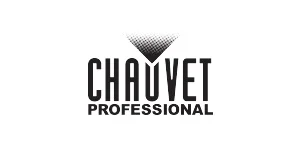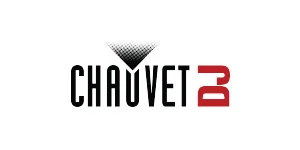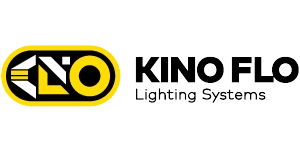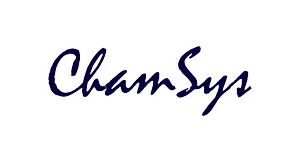Lighting sources, controls & distribution, as well as system & fixture “intelligence” is changing rapidly. This paper discusses the ways in which the industry and designers are handling these changes and preparing for the future.
INTRODUCTION
When we think of lighting systems design for live entertainment venues, we think of elaborate lighting systems, dimmers and conventional lighting fixtures. However, a new direction for lighting systems design is moving us away from conventional lighting, the need for dedicated dimmer rooms and the idea of designing lighting systems using just power distribution for control.
WHERE WE ARE TODAY
If we were to look at presently designed and installed live entertainment venues we would find most facilities have their compliment of traditional Lekos, Fresnels, Scoops, PAR, Cyc and Spot Light fixtures – all connected in a dimmer per circuit topology to massive electrical dimmer and relay panels, controlled via ACN and DMX by very simple lighting consoles. Lighting systems have historically required very large amounts of power and generate very large amounts of heat. With the introduction of LED type fixtures being used in theatrical applications – we are beginning to see a starting point to where lighting designs may take us in the future.
ENTER LED LUMINAIRES
LED lighting fixtures are changing and will continue to change the face of lighting systems design. To date LED lighting fixtures are used primarily for lighting cycloramas or as top, side, or back wash light. This will all change as the optical systems in LED fixtures evolve to allow an effective LED based ellipsoidal spotlight. We have seen prototype fixtures from ETC, Strand and a number of new players as well as production models from Robert Juliat and Strong. These are just the beginning of where LED lighting will take us. Enter a world where we have LED luminaires to match and perform to the same specifications as today’s conventional incandescent (tungsten halogen) lamp fixtures.
LED luminaires have several advantages including:
And this doesn’t even include the overall cost savings when adopted in the context of a renovation or new construction project.
THE POTENTIAL
So, in this world of readily available LED luminaires, let’s take a look at the electrical power side of a lighting design. LED fixtures are self dimming which means they no longer need conventional dimmers – and hence no dimmer room. We can deploy direct 3-phase feeder distribution topography and control all lighting circuits direct from the circuit breaker panel. The conceptual one line diagram that follows illustrates how the power side of lighting topography might be designed.
RAMIFICATIONS
Now, before we dive into this further, just consider some of the ramifications of pursuing lighting system design in this direction – all of which create a more sustainable system:
COST SAVINGS
In reviewing the design of typical theatre and broadcast facilities – the potential savings are staggering. Consider these points and their impact on your project and your client’s budget:
LEARNING CURVE FOR OPERATION
While the fundamentals of lighting will remain the same, designers will need to become comfortable with various fixtures along with the new color gamut. Master electricians will need to be much more data communications savvy, consoles will need to change to allow source calibration, and theatres will need to think about their investment in lights as a recurring capital expenditure. Lastly this is a fundamental shift in the way the theatre lighting community has thought about circuiting. The quantity of dimmers or circuits no longer suggests the granularity of control.
WHERE WE COULD (AND SHOULD)BE HEADING
We are heading to a change in how System Designers & Theatre Consultants design, engineer and specify lighting systems for live entertainment & other venues.
Granted, the needed LED fixtures are not all here YET for front light, but they have arrived for cyc lighting and wash lighting. The advances in LEDs, heat management strategies and the optics necessary to create a focusing unit are very rapidly developing – we need to look ahead and plan for this near term change in lighting equipment.
Considering the components within our fixtures and our control systems, there should be no doubt that the designs we build today will be based on outdated technology by the time the structures are built. That is, unless we consider the march of technology and attempt to anticipate these changes. Mechanical and electrical systems that are sized based on loads derived from yesterday’s technology will be much less efficient than those sized to accommodate today’s or tomorrows greatly reduced loads.
Therefore, it is critical to develop a strategy to meet these changes and to provide designs that incorporate technologies that are available today or that will be available in the future.There are products that will help us get there and lighting designers will begin to learn more about how to incorporate these into their power and lighting control designs.
Products such as the LynTec RPC Panelboards which include motorized breakers with the ability of DMX or IP based monitoring and control would play an important role in this type of design going forward. These panels (located closer to the loads) would essentially replace the “dimmer rooms” of present day designs.
Using a Lyntec RPC circuit breaker panel would provide a very cost effective solution to meet the needs of this going-forward lighting design. In addition, the remote control and monitoring capability could provide the end-user / operator with simple straightforward operation and valuable information as to the status of each and every circuit.
FINAL THOUGHTS
Aside from “future proofing” the technology we employ in the lighting & power controls in our designs, perhaps the biggest change for lighting system designers will be on the AC power side of the lighting fixtures.
The resistance to change can be limiting. For master electricians that have been lighting systems the same way for decades, making fundamental changes in how they approach system design will be necessary to their acceptance of incorporating more self dimming fixtures, and moving intelligence to the fixture. For accomplished Lighting Designers the movement to fixtures that change color through additive mixing instead of filtration may be the biggest hurdle to embracing LED technologies with an open mind. Letting go of preconceptions and the mentality of “this is what we’ve always done” will be a challenge. However, as the theatre learns to embrace advancements in technology, and as designers learn more about integrating these technologies, including lighting and power controls, change will happen.
The result? A new world order for lighting and controls in theatre design that utilizes LED lighting, creates energy and cost savings and that meets precise specifications and performance standards to ensure great theatre experiences worldwide.
This paper was developed based on a detailed interview with Curtis Kasefang, Theatre Consultant and co-founder of Theatre Consultants Collaborative based in North Carolina.In this interview, Curtis shares the groundwork of what will likely be an entire new concept in lighting system design & engineering for theatres and other live production venues.
ABOUT Theatre Consultants Collaborative
TCC is a team of twelve industry veterans and creative thinkers who joined forces in October 2003 to assist clients through the complex process of theatre programming, sustainable planning and design, as well as the design and integration of specialized performance systems. TCC believes that theatre is fundamentally about people – the relationship between performer and patron – and, through their work, they help translate the exacting design criteria of a performance space into a physical form that enhances the sense of shared experience among participants. They believe performance equipment systems must enhance that relationship and allow their clients to operate in an efficient, sustainable fashion. TCC is constantly working with manufacturers in developing robust solutions to industry needs. They seek to be forward thinking and anticipate trends in production and technology so that they may give clients spaces that learn and adapt to their evolving needs.
TCC’s Curtis Kasefang is an industry veteran knownfor designing & specifyingperformance lighting, sound, video & communication systems. His unique back- ground in theatrical lighting, sound system engineering, IT & process modeling enabled him to marry experience with technology throughout the design process. His vast knowledge and innovative approaches to lighting design make him an often sought resource and speaker on the subject of lighting and the trends that are impacting its future. For more information reach Curtis & TCC at: www.theatrecc.com.
ABOUT LYNTEC
LynTec brings to market electrical protection and circuit switching capabilities in the same enclosures. In doing so, the company has always found ways to save space, lower system installation costs and build trusted relationships with audio system and lighting designers. Its expansion into electrical and lighting controls, and now its growth into expanded lighting control, energy monitoring, built in power conditioning, and mobile applications continues to position the company as a leading resource for the AV and lighting industries and an integral partner for sustainable energy practices. For more information visit www.lyntec.com.
ABOUT CHRISTOPHER MAIONE
Christopher Maione is a recognized leader and expert in the AV industry with over 28 years of audiovisual expertise. Regarded as an industry visionary, his forward thinking and progressive approach to business led him to found and become the managing partner of one of the world’s leading AV consulting firms earning the company accolades as a leader in AV solutions and technologies. In his new company, Christopher Maione Associates, Maione employs the same stringent procedures and protocols that enabled his previous company to achieve global success and a reputation for the highest caliber and quality of work. Maione now focuses his attention on AV System Integrators, Manufacturers and Fortune 500 clients to help them identify strategic ways of handling their clients, products, & projects. Maione has a talent for forecasting trends and identifying emerging technologies that substantially impact the AV industry. Based on his own business model, he encourages colleagues to strive for excellence and consistently challenges AV System Integrators, Manufacturers and the AV industry as a whole to improve its practices, grow its services, and develop better products all in an effort to set a higher standard and respond to the changing needs of clients. Well versed in all aspects of AV, IT, Integrated Technologies, Industry Standards, Green AV and best practices and protocols, Maione is an Adjunct InfoComm Faculty Member and CTS-D/CTS-I provider. He serves on a variety of key industry standard committees and in doing so, he continues to help set industry benchmarks for quality and compliance. For more information please contact: .







Add Comment